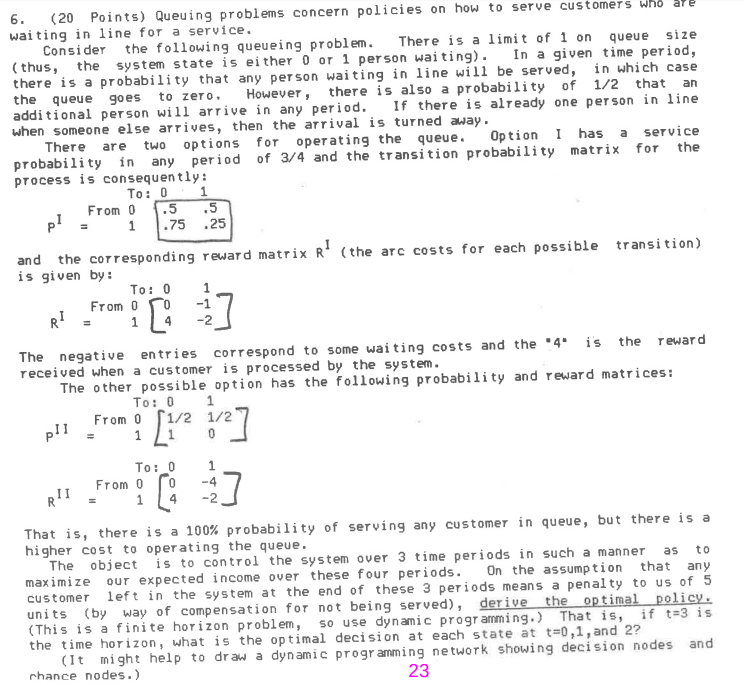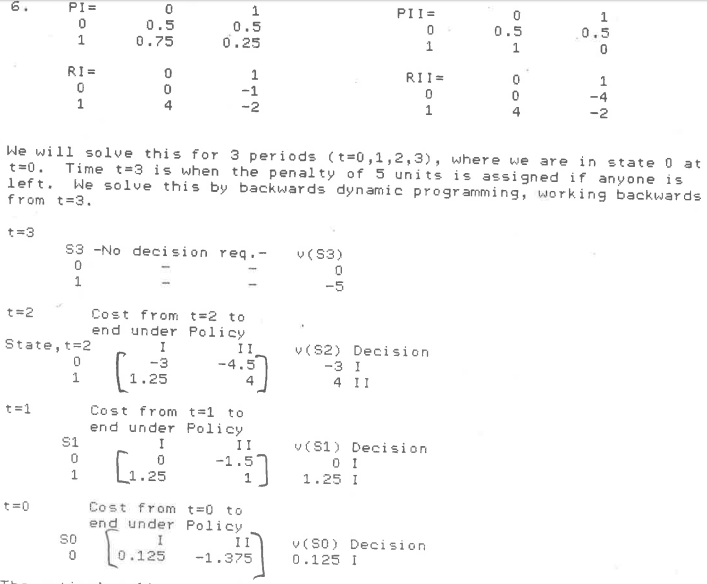Answered step by step
Verified Expert Solution
Question
1 Approved Answer
The answer to this stochastic dynamic programming is attached. Please go through explicit detail as to how each value in the stage table values were
The answer to this stochastic dynamic programming is attached. Please go through explicit detail as to how each value in the stage table values were calculated. I really want to understand this problem and will give a thumbs up for a good explanation.


Step by Step Solution
There are 3 Steps involved in it
Step: 1

Get Instant Access to Expert-Tailored Solutions
See step-by-step solutions with expert insights and AI powered tools for academic success
Step: 2

Step: 3

Ace Your Homework with AI
Get the answers you need in no time with our AI-driven, step-by-step assistance
Get Started


